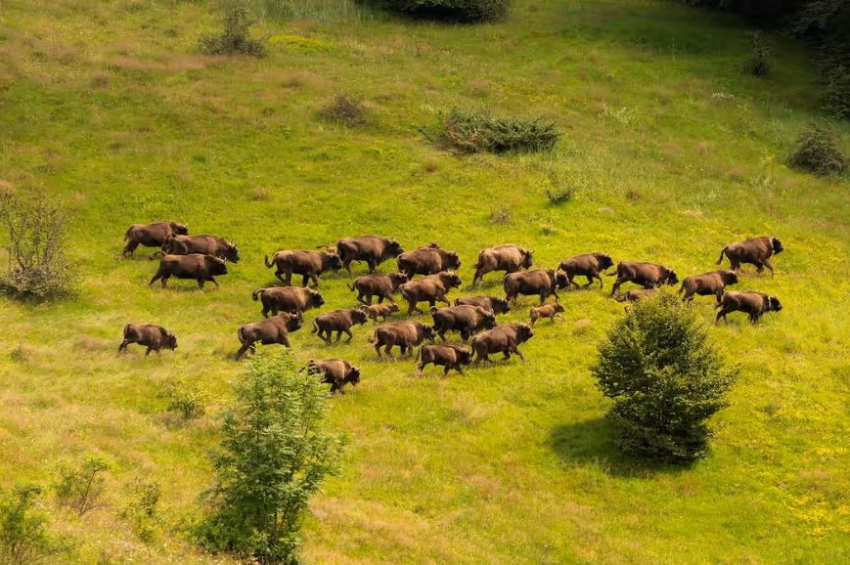Restored bison herd in Romania could store CO2 equivalent to emissions from 43,000 cars yearly
A herd of 170 European bison, reintroduced to the Țarcu reservation in Romania's Carpathian Mountains, could sequester CO2 equivalent to the emissions of 43,000 US cars yearly, according to a new research paper in the Journal of Geophysical Research: Biogeosciences.
The free-roaming bison community boosts plant growth and preserves carbon in the soil as they graze, showcasing their potential to mitigate climate change, the authors explained in a statement issued by the Rewilding Europe.
More to read:
Scientists discover Danube nations continue exterminating endangered sturgeon fish
European bison, absent from Romania for over two centuries, were reintroduced by Rewilding Europe and WWF Romania in 2014. The tiny bison population in the southern Carpathian Mountains has since grown to over 170, making it one of the largest free-roaming herds in Europe, with the capacity to support 350-450 heads.
The study, funded by WWF Netherlands and employing a model developed by scientists at Yale School of the Environment, estimates that the bison could help capture an additional 54,000 tons of carbon per year. This is nearly 9.8 times more than would be captured without the bison, though this figure has a 55% margin of uncertainty.
More to read:
Scientists gene-edit plants for enhanced CO2 capture and storage
The estimate corresponds to the CO2 emissions of approximately 43,000 average US petrol-powered cars, or potentially 84,000 if considering the upper estimate, and around 123,000 average European internal combustion cars due to their higher efficiency.
According to Professor Oswald Schmitz of Yale School of Environment, the lead author, bison enhance ecosystems by evenly grazing grasslands, recycling nutrients, dispersing seeds, and compacting soil to prevent carbon release. Their evolutionary role in grassland and forest ecosystems has been crucial, and their reintroduction can help restore ecological balance and sequester carbon.
Previous studies confirm that large – and free – mammals play a significant role in the carbon cycle and biodiversity, unlike domestic cattle living compactly in large numbers for humans’ needs.
Bison, as a keystone species, maintain diverse landscapes, and their return has also spurred nature-based tourism and businesses in the Țarcu reservation.
Schmitz cautions that the impact of European bison is specific to the Carpathian grasslands' soil and climate conditions, and may not directly apply to other regions like American prairies, where the last wild bison – called buffalo – was killed by 1900.
Whether bison reservations will open in other European countries too depends on the results of the experiment in Romania. For this, the authorities must draft new policies, allocate space, and enforce protections for bison.
***
NewsCafe relies in its reporting on research papers that need to be cracked down to average understanding. Some even need to be paid for. Help us pay for science reports to get more interesting stories. Use PayPal: office[at]rudeana.com or paypal.me/newscafeeu.







